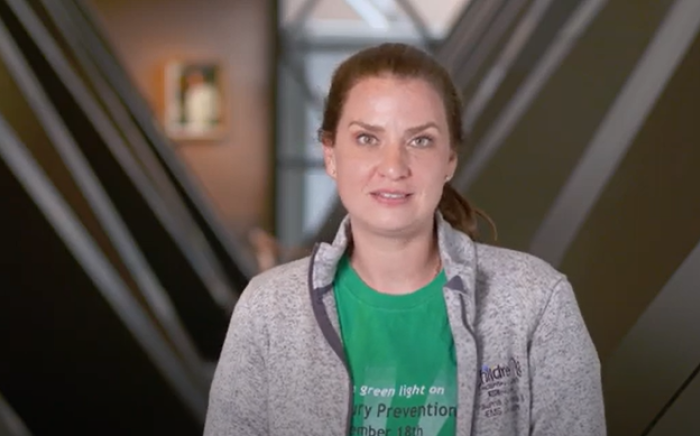Childhood Cancers We Treat
Our team has decades of experience treating childhood cancers, including leukemia, brain tumors and other cancers.
Pediatric Cancer Conditions
At Siteman Kids at St. Louis Children’s Hospital, we treat cancers and related conditions, including:
Blood disorders
- Leukemia: The most common type of childhood cancer, leukemia, starts in the bone marrow and spreads to the blood. It can affect other parts of the body, including the lymph nodes, liver and spleen. There are several types of leukemia, including acute leukemia and chronic myelogenous leukemia.
- Lymphoma: This cancer affects the lymphatic system, which helps the body fight diseases and infections. Lymphoma can spread to other parts of the body, and affects boys more often than girls. Types of lymphoma include Hodgkin lymphoma and Non-Hodgkin's lymphoma.
Brain tumors
These tumors develop when abnormal tissue grows in the brain. Brain tumors can be malignant (cancerous) or benign (noncancerous).
- Craniopharyngioma: A type of noncancerous tumor found near the pituitary gland, craniopharyngiomas usually occur in children ages 5 to 14. These tumors require treatment because they may affect hormones, vision and more.
- Ganglioglioma: These rare brain tumors are usually noncancerous. A small number of gangliogliomas can grow quickly and become malignant.
- Glioma: Cancerous tumors that develop from glial cells in the brain are called gliomas. These tumors usually respond well to treatment. Astrocytoma, ependymoma and oligodendroglioma are types of glioma.
- Medulloblastoma: These tumors are often cancerous and grow fast, starting in the part of the brain called the cerebellum. They may spread to the spine and other parts of the nervous system.
Kidney and germ cell tumors
- Germ cell tumors: These tumors grow in or near the ovaries or testicles, or near the brain, lungs, abdomen and spine. They can be cancerous or noncancerous. Types of germ cell tumors include teratoma, endodermal sinus tumor (yolk sac tumor) and embryonal carcinoma.
- Wilms tumor: This kidney cancer usually develops in children before age 4. Tumors can become quite large before they are found and can spread to other parts of the body, including the lungs, liver and lymph nodes.
Liver cancer
Liver cancer is rare in children and teens. The two primary types of childhood liver cancer are:
- Hepatoblastoma: This liver tumor often affects children under age 4. It usually does not spread to other areas of the body.
- Hepatocellular carcinoma: Although rare, this is the most common form of liver cancer. This type often spreads beyond the liver and usually affects children older than age 14.
Other cancers
- Neuroblastoma: This cancer forms in the nerve tissue of babies and small children. It is the most common form of cancer in children under 12 months old, and is rare in those over age 10.
- Pleuropulmonary blastoma (PPB): This rare childhood lung tumor can occur in very young children. The earlier it is diagnosed, the better the prognosis.
- Retinoblastoma: This rare cancer affects the retina of the eye. It usually occurs in children under age 5.
- Skin cancer: There are three types of skin cancers: basal cell carcinoma, squamous cell carcinoma and melanoma. All are very rare in children. Melanoma is the most serious.
Sarcoma
This type of cancerous tumor, usually found in young adults, can grow on cartilage, fat, muscle, tendons and bones. Some examples include:
- Ewing sarcoma: A type of cancerous tumor, this rare cancer usually affects children ages 10 – 19. The tumor grows in bones or tissue connected to bones.
- Osteosarcoma: The most common type of bone cancer in children and teens, this cancer is still very rare. It’s found more often in teenagers and young adults.
- Rhabdomyosarcoma: This rare cancer forms in cells that become skeletal muscle cells. It is primarily found in children under age 10.
Related conditions and side effects
- Cancer predisposition syndrome: Several genetic mutations increase a person’s likelihood of developing cancer at an earlier age than the general population. The most common hereditary cancers include breast-ovarian cancer syndrome and hereditary non-polyposis colon cancer.
- Histiocytosis: These disorders occur when too many white blood cells, called histiocytes, build up in organs or tissues, causing organ damage or tumors.
- Hemophagocytic lymphohistiocytosis (HLH): This rare blood disorder, also known as HLH, primarily affects infants and children. HLH makes the immune system overactive, leading immune cells to attack healthy cells and tissue.
- Langerhans cell histiocytosis: Also called histiocytosis X, this condition damages tissue throughout the body. It was considered a cancer, but researchers now think it is caused by an autoimmune response.
- Late effects: These side effects of childhood cancer treatment occur after treatment is completed. About two-thirds of young adult survivors of childhood cancer experience late effects.
- Mucositis: A common side effect of cancer treatment, mucositis results in inflamed and painful mucous membranes. Mouth mucositis can affect eating, talking or swallowing.
- Neutropenia: This condition causes a low white-blood cell count that increases the chances of infection in patients with cancer. It is a side effect of radiation and chemotherapy.
Contact Us
Please call 800.678.5437 to make an appointment or request an appointment online.















